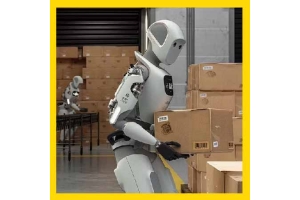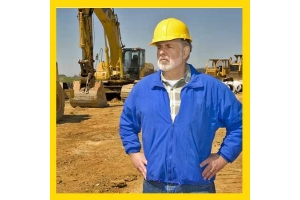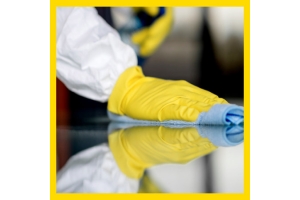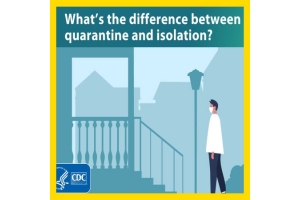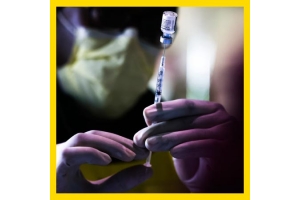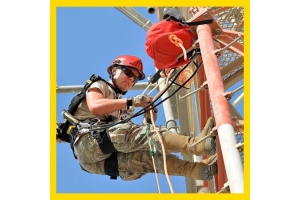Currency
-
November 28, 2021Two firms and two supervisors plead guilty to charges after unprotected employee falls off a bridge under construction
More than two years after a worker fell to his death from a bridge under construction, two companies and two supervisors have been fined in a court in Fort St. John, B.C.
A release from WorkSafeBC, the provincial worker safety agency, said that when the man fell in northeastern B.C., he had no fall-protection equipment and there were no guardrails.
Brian Baker, Randolph Kosick, Yoho Resources and Great Northern Bridgeworks had previously pleaded guilty to charges under the Workers Compensation Act and the Occupational Health and Safety Regulation.
Court documents show Yoho Resources, the main contractor, and Great Northern Bridgeworks, the victim's employer, have each been fined $70,000, plus a 15 per cent -
November 28, 2021Washington — Carrying on with only one of its five board seats filled “impairs the function” of the Chemical Safety Board and “continues to be the biggest risk” to agency operations, the Environmental Protection Agency Office of Inspector General contends in a new report.
CSB Chair and CEO Katherine Lemos has operated as the sole member of the board since May 2020.
According to the report, issued Nov. 10, “workload limitations arising from one board member attempting to perform the work of five impair the board’s ability to fulfill its responsibilities without risk of internal control concerns.” In addition, the lack of a full board “may prevent the CSB from achieving its stated mission to ‘drive chemical safety change through independent investigation to protect people and the environment.’”
In September, the Senate Environment and Public Works -
November 28, 2021At Forest NJ, getting a job done quickly should never get in the way of completing a job correctly and as safely as possible.
At Forest Electric New Jersey (Forest NJ), safety is manifested in two ways: methodical work practices and a level of commitment to its people.
“At every level of our organization—from an entry-level electrician to the members of our executive team—we emphasize that getting a job done quickly should never get in the way of completing a job correctly and as safely as possible,” explains Wayne Baruch, Forest NJ’s safety director. The company takes a team-centered approach to safety, fostering a spirit of open communication among all employees, at all levels. This approach helps to ensure that every team member has the tools, knowledge and networks of communication necessary to complete their work in as safe a manner as possible.
-
November 28, 2021Washington — Carrying on with only one of its five board seats filled “impairs the function” of the Chemical Safety Board and “continues to be the biggest risk” to agency operations, the Environmental Protection Agency Office of Inspector General contends in a new report.
CSB Chair and CEO Katherine Lemos has operated as the sole member of the board since May 2020.
According to the report, issued Nov. 10, “workload limitations arising from one board member attempting to perform the work of five impair the board’s ability to fulfill its responsibilities without risk of internal control concerns.” In addition, the lack of a full board “may prevent the CSB from achieving its stated mission to ‘drive chemical safety change through independent investigation to protect people and the environment.’”
In September, the Senate Environment and Public Works -
November 28, 2021CEO takes safety personally and says it has to be his top priority if the firm is to succeed
When David Gandossi took charge of his company, he soon realized safety standards were nowhere near where he wanted them to be. Safety immediately became his top issue.
He said: “I think as an industrial leader that’s got to be my number one priority […] I just take it really personal, I know how quickly these things can happen.”
Gandossi is President and CEO of Mercer International, a world leader in pulp production which is headquartered in Vancouver, and was recently named as the CEO of the Year at the Canada’s Safest Employers Awards.
Starting out as a chartered accountant in Canada, he moved into the forest industry and has been involved in that sector since 1994.
During the early years of his career, he also worked in construction where he “recognized early on the risks of not paying attention or not being trained”.
-
November 21, 2021Greenbelt, MD — Every day for the past several years, Brian McQueen has felt the left side of his neck and wondered if his non-Hodgkin’s lymphoma will return.
Reflecting as part of an update to a report that details 11 best practices for minimizing cancer risk among firefighters, McQueen, chair of the National Volunteer Fire Council’s Cancer Subcommittee, wrote: “It’s not a habit, it’s a reassurance that changing my lifestyle, changing the way that I fight fires and take care of myself while on the scene and off, became a priority in my life.”
Released in September, the update follows up on the Lavender Ribbon Report – an August 2018 document produced by NVFC and the International Association of Fire Chiefs’ Volunteer and Combination Officers Section – which states that firefighters face an increased risk for multiple types of cancer compared with the general population.
The update features personal reflections such as McQueen’s, as well as examples of firefighters -
November 21, 2021Key takeaways from WOHSS and eCompliance hosted webinar
The Women in Occupational Health and Safety Society (WOHSS) and eCompliance hosted a webinar last week on August 27, featuring speaker Stacey Silva – Enterprise Customer Success Coach at eCompliance. The webinar was focused on safety culture, and how safety leaders can create and reinforce safety culture within their organization.
With COVID-19, the concept of safety culture has shifted due to teams adjusting to new workplace guidelines, increased stress factors and employees working from home. Operational concerns have also arisen for many businesses and organizations, who are wondering ‘how to do more, with less?’
Safety leaders may be feeling overwhelmed by all these new demands and issues, as Silva said during the webinar, “even safety heroes need to take a bit of a break.”
During the -
November 21, 2021PARK RIDGE, Illinois — As a global leader in the development of workplace safety and health standards, the American Society of Safety Professionals (ASSP) has published several new and revised voluntary national consensus standards that help employers minimize on-the-job risks to better protect their workers.
“Standards lead organizations big and small in the same direction to achieve safer and healthier workplaces,” said ASSP President Brad Giles, P.E., CSP, STS, FASSP, GIOSH. “They are a cornerstone of a successful business, setting minimum requirements that help maximize operations, increase the bottom line and ultimately save lives.”
With regulatory requirements being slow to change and often out of date, compliance is not sufficient to protect workers. Voluntary national consensus standards provide the latest expert guidance and fill gaps where federal regulations don’t exist. Leading companies rely on them to drive continuous improvement and injury prevention. -
November 21, 2021Before the COVID-19 pandemic, the term personal protective equipment (PPE) was primarily used by professionals who wore it daily to keep them safe on the job. Then, seemingly all at once, national attention turned to PPE.
Industrial workers quickly found themselves discussing the effectiveness of various masks and respirators with their friends and families in casual conversations, and images from the pandemic of nurses and doctors with bruised faces from their masks after 12-hour shifts are burned into our memories.
We’ve recently reached a point where COVID-19 infections are declining in many areas of the United States, while vaccination rates are rising globally. Jobsites are slowly reopening—assuming they closed at all—and industrial workers are once again donning their PPE.
What’s different now is that employers have a new perspective on workers’ PPE needs. PPE in the industrial workspace isn’t going anywhere, and the next generation will offer protection, -
November 14, 2021A look at the process – and its benefits
In December 2004, Rich McElhaney and his co-workers were learning how to use a water lance – a piece of equipment that uses 20,000 pounds per square inch of pressure to cut through concrete and steel. They were in such a hurry to get through the training that day that they didn’t perform their usual Job Safety Analysis. If they had, they likely would have learned that the person operating the water lance was planning to use it on full power. And that the equipment was set up for a right-handed operator instead of the left-handed worker who was at the controls.
McElhaney was about 12 feet away when the operator lost control of the tool. Water from the lance cut through his legs, hitting both femoral arteries.
“I almost bled out,” he said.
After three years of infections, multiple surgeries and learning how to walk again, McElhaney plays the 911 recording from that day during his presentations as

